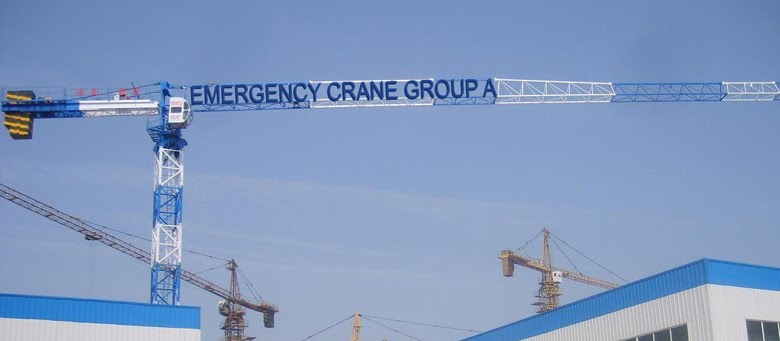Sunday, 14 November 2010
Sunday, 2 May 2010
Mission
To provide emergency lifting equipment to disaster stricken areas, in order to save Lives and the Environment.
Presentation











If anyone would like to have a look at how to assemble the crane please contact James Baddeley for a demonstartion of the model.
Pulley System
Our pulley sytem will be a strap surrounded in Heavy duty plastic balls which will allow the pulley to move along the beam. These will be pulled by a winch attached to one end of the crane, this will allow the weight to be moved easily by tired rescue workers instead of them having to push a heavy load. this will be patented to prevent other people from taking our design.
Saturday, 24 April 2010
Conclusion
ECS, why we are better:
- Our designs are simple and cost effective meaning more value for you the consumer
- We are a company concerned with looking after people and the environment by cutting down on our carbon footprint
- With rapid production abilities you will soon be ready for anything
We thank you for your time whilst looking at our tender proposal and hope to hear from you in the near future.
- Our designs are simple and cost effective meaning more value for you the consumer
- We are a company concerned with looking after people and the environment by cutting down on our carbon footprint
- With rapid production abilities you will soon be ready for anything
We thank you for your time whilst looking at our tender proposal and hope to hear from you in the near future.
Thursday, 22 April 2010
Materials selection
Whilst wood may seem a very primitive material to build a crane out of, it has to be remembered that even in ancient Egyptian and Ancient Greek times, wooden cranes were used to lift weights well in excess of a Tonne. Since then however, wood technology have advanced even more, if the importance of a material is measured by volume consumed per year, wood is still the most important polymer available to the engineer.
The wood we plan to use is douglas fir, this has one of the highest Young's Modulus for its density of any wood (density = 0.55 Mg m-3, Young Modulus = 16.4 GPa). We are aware that many competing cranes will be built out of steel, however with its far higher density of 7.75 - 8.05 Mg m-3, a far higher volume of wood can be used and tansported at the same time with the weight still remaining lower. This provides a major advantage in the form of if a failure was to occur it is easy enough to carry a spare beam section or leg with you to replace it quickly and easily.
The steel box section in the centre of the beam and at the leg joints is an integral part of the design as it provides vital reinforcement at the points where very large forces will be acting. All the wooden beams and steel box section we are using are of standard dimensions and will allow the fast and easy production of the kits. Another advantage of using standard parts is that modification of the crane by the end user will be far easier. For example. If someone wished to add feet to the crane, all that would be required would be some spare box section and some personal ingenuity on behalf of the user dependent on the situation.
The best part of the 'slot and lock' design employed in this crane is that no specialist training is required to assemble it. Users do not need to be trained in setting up hydraulics or wiring up electric winches. This crane uses a rack and pinion pulley system and nuts and bolts to fix the sections together. Materials and system that anybody can easily become familiar with in a matter of minutes.
For ECS, one of our highest priorities is looking after the world we working with to save people. For this reason we plan to plant up to ten trees for every tree we use. It is important to us to remain as carbon neutral as possible in our efforts to save people as some research has suggested that global warming has played an integral part in the rise in frequency of natural disasters.
Construction Manual
The strongest selling point the ECS emergency crane is the simplicity of the assembly. Unlike other products, no specific knowledge is required as nothing more is needed than a couple of spanners.
The crane arrives as nine separate pieces, these are:
- Legs x4 (numbered 1 - 4)
- Leg joints x2
- Beam x2 (numbered 5&6)
- beam joint x1
- Standard Bolts (with nuts) x8
It is recommended that you first insert the numbered legs into their corresponding numbered slots in the leg joints and secure them in place using the standard bolts provided. Each leg has multiple bolt holes so the length can be altered dependent on the ground clearance needed and the terrain upon which the crane is placed. Next, insert the beams into their corresponding numbered slots also in the leg assemblies and again fix into place using the standard bolts provided. Finally, ensure the cradle and pulley system has been inserted over one half of the beam and then proceed to fix both sides of the crane into the central beam support, finally securing using the last two standard bolts.
This assembly is very quick and efficient, even the materials used allow it to be assembled by two or three people safely.
Subscribe to:
Comments (Atom)
